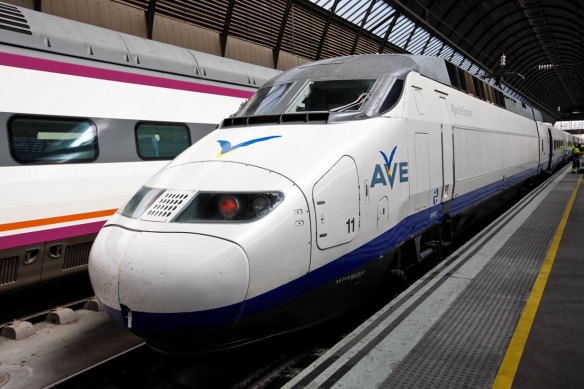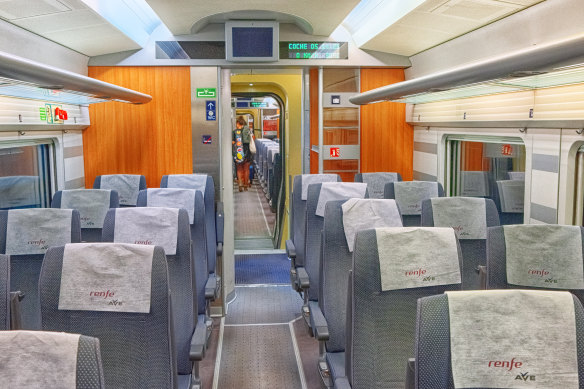This is not the smooth, modern rail experience you expect in Europe
The journey
Madrid to Seville on Renfe’s AVE service, with a scheduled time of two hours and 52 minutes, aboard an eight-car S100 high-speed train.

Travelling on board Spain’s Renfe AVE trains is not the smooth journey one might expect in Western Europe.
The class
On Renfe’s AVE network – which stands for “Alta Velocidad Espanola (High Speed Spanish)” – there are two classes and three tiers of fares. For classes, you have standard, or “Estandar” in Spanish, with seats in 2-2 formation, and Comfort (“Confort” in Spanish), in 1-2 formation. Passengers can buy “Basico” fares (the cheapest, and non-refundable), “Elige” (semi-flexible and refundable), or “Premium”, the most flexible, with food included.
Carbon emissions
20 kilograms per passenger. Flying between these two cities would emit about 50 kilograms of carbon.
Boarding
What’s the word for “chaos” in Spanish? Because that’s what I see before me at Madrid’s Atocha train station. (It’s “el caos”, FYI.) I’ve had to make a mad dash from one section of the station, where my train from the airport arrived, to the long-distance departure point, known as Madrid Puerta de Atocha. There are two departure levels here – “primera” and “baja” – and travellers need to first divine which level they need to be on, then have their bags scanned at security before proceeding through. Once I’ve managed that, I have to keep my eye on the departures screen to check for my platform, which hasn’t been announced even after my departure time has come and gone, which is how I realise the train is delayed. By the time we board, half an hour late, there’s a huge scrum of people trying to push their way down to the platform.
The seat
The seats in my standard-class cabin are arranged in 2-2 formation, and are a little on the squeezy side. There’s free Wi-Fi, though service is patchy.

Seats are cramped but at least the food is good.Credit: iStock
Baggage
Renfe specifies passengers are allowed three pieces of luggage that can’t weigh more than 25 kilograms in total – although no one will ever check them, so as long as you don’t go too crazy you’ll be fine.
Food + drink
Here’s the saving grace of this Renfe experience: the restaurant car. I’m able to buy a “bocadillo” – sort of a Spanish-style baguette – laden with jamon iberico, with a little tub of tomato pulp to smear into the bread and a small bottle of olive oil to tip over the tomato. Paired with an icy cold Cruzcampo beer, life is suddenly much better.
One more thing
Renfe train fares work on a dynamic pricing system, so the later you book, and the more popular your train, the more the ticket will cost you. I was forced to book this seat at the last minute, after a delayed flight caused me to miss a connection, so it cost far too much money: €120 ($195).
The verdict
This is not the smooth, modern rail experience you may expect in Western Europe. This Renfe train leaves Madrid half an hour late, arrives in Seville an hour late, and is jam-packed and uncomfortable. It’s also very expensive. It gets an extra half a star, however, for the cracking bocadillo.
Our rating out of five
★★1/2
The writer travelled at his own expense.
Sign up for the Traveller newsletter
The latest travel news, tips and inspiration delivered to your inbox. Sign up now.